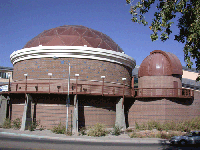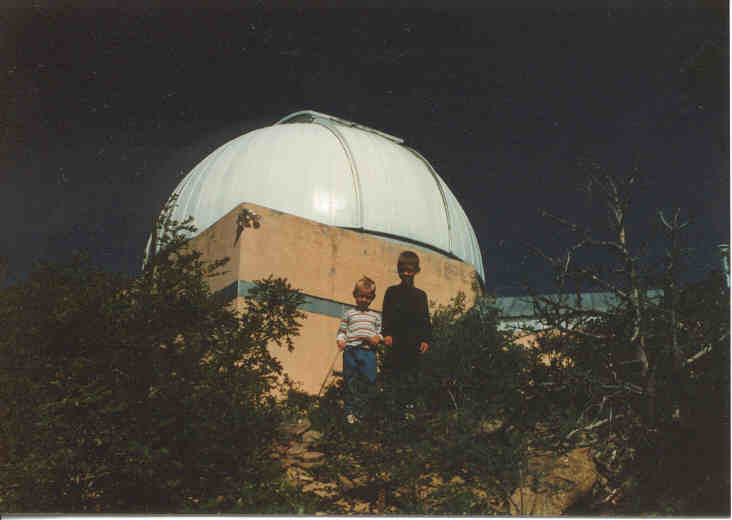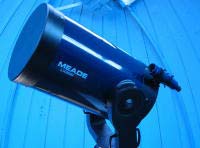
Karaflas
Μέλη-
Αναρτήσεις
22 -
Εντάχθηκε
-
Τελευταία επίσκεψη
Σχετικά με Karaflas
- Γενέθλια 05/03/1986
του/της Karaflas Επιτεύγματα
-
Vegan, η Σελήνη απομακρύνεται 3.5 με 4 εκ. το χρόνο. Όχι 2. NIckthegreek, αυτό είναι αλήθεια. θα έχουν συμβεί πάρα πολλά μέχρι τότε. Το καλό ή κακό για άλλους, είναι που δεν θα έχουμε την δυνατότητα να δούμε ποτέ την Γη με δακτύλιους, οι οποίοι θα ήταν πιο λαμπροί κι από αυτούς του Κρόνου, όταν η Σελήνη θα εκραγόταν! Γιατί; Γιατί μετά από 3.2 δισ. χρόνια, ο Ήλιος μας θα έχει "καταπιεί" τη Γη αφού θα έχει γίνει κόκκινος γίγαντας.
-
Ναι, 20000 δεν είναι ο σωστός αριθμός. Κανονικα, είναι 3200000000. Δηλαδή 3.2 δισ χρόνια. Κάτι δεν πήγε σωστά στο προηγούμενο post. Να κι ένα link: http://www.space.com/scienceastronomy/top_10_cool_moon_facts-1.html Επίσης βρήκα και κάτι άλλες πολύ σημαντικές πληροφορίες, από της σημειώσεις μου από τότε, αλλά θα περιμένω ως την Τετάρτη που θα μιλήσω με τον καθηγητή για να βάλω ότι πληροφορίες θα έχω, όλες μαζί. Υπομονή λοιπόν...
-
Να ρωτήσω, μιλάμε για εντελώς ξαφνική απομάκρυνση της Σελήνης; Αν όχι, σας λέω, ότι σχετικά πρόσφατες μετρήσεις, έδειξαν πως η Σελήνη θα μας έχει εγκαταλείψει οριστικά σε περίπου 20000 χρόνια, μιας και απομακρύνεται κάθε χρόνο όλο και περισσότερο. Το θυμάμαι πολύ καλά αυτό που σας λέω, γιατί μου το 'χε πει ο καθηγητής ενός απ' τα μαθήματα αστρονομίας που είχα στο πανεπιστήμιο το καλοκαίρι πολλές φορές. Μάλιστα, αν περιμένετε μέχρι την Τετάρτη που έχω ένα απ' τα εργαστήρια αστροφυσικής με τον ίδιο καθηγητή, θα σας δώσω περισσότερες πληροφορίες για το θέμα. Μου έκανε εντύπωση πάντως που δεν το γνωρίζατε. Φαίνεται τα νέα εδώ διαδίδονται πιο γρήγορα . Άντε θα τα πούμε.
-
Έβαλα κι αυτή την είδηση, γιατί μου άρεσε σαν ιδέα. Διαβάστε 'την λοιπόν: http://www.esa.int/esaCP/SEMQKMMZCIE_index_0.html
-
Το μεγαλύτερο τηλεσκόπιο του κόσμου.
Karaflas δημοσίευσε μια συζήτηση σε Αστρονομία, Αστροφυσική και Κοσμολογία
http://www.pparc.ac.uk/Nw/SKA.asp -
Αστεροειδής 8.2 εκ. ετών.
Karaflas δημοσίευσε μια συζήτηση σε Αστρονομία, Αστροφυσική και Κοσμολογία
http://pr.caltech.edu/media/Press_Releases/PR12787.html -
Άστρα που δεν θα 'πρεπε να υπάρχουν
Karaflas δημοσίευσε μια συζήτηση σε Αστρονομία, Αστροφυσική και Κοσμολογία
http://uanews.org/cgi-bin/WebObjects/UANews.woa/5/wa/SRStoryDetails?ArticleID=12100 -
Σκοτεινός Γαλαξίας;
Karaflas απάντησε στην συζήτηση του/της Karaflas σε Αστρονομία, Αστροφυσική και Κοσμολογία
Φίλε Heal, ακριβώς γι'αυτό έβαλα αυτή την είδηση. Κι εγώ όταν το διάβασα, εντυπωσιάστικα και είπα να το παραθέσω και στο Astrovox. Τώρα περιμένω με αγώνία τις εξελίξεις στο θέμα, μιας και ασχολούμαι μ'αυτο εδώ και 5-6 χρόνια. Για να δούμε λοιπόν... -
http://www.pparc.ac.uk/Nw/d_galaxy2.asp
-
Λοιπόν παιδιά ευχαριστώ για τις απαντήσεις σας. Για να μην σας κουράζω άλλο όμως, θα σας πω γι' αυτό το τηλεσκόπιο. Είμαι φοιτητής αστροφυσικής και στα τέλη του Αυγούστου που μας έρχεται, θα πάρω μεταγραφή σε άλλο πανεπιστήμιο. Το πανεπιστήμιο λοιπόν που θα πάω για να τελειώσω τις σπουδές μου, έχει δικό του αστεροσκοποίο και τηλεσκόπιο (άυτό για το οποίο ρώτησα), και στο οποίο θα μπορώ να πηγαίνω τσάμπα και όποτε θέλω για παρατηρήσεις και έρευνες που θα κάνουμε . Βέβαια αυτό δεν έιναι τίποτα μιας και λίγα χιλιόμετρα πιο πέρα υπάρχουν: α) δύο άλλα αστεροσκοποία, κρατικά και σαφώς καλύτερα στα οποία επίσης θα έχω ελεύθερη πρόσβαση επειδή ειμαι φοιτητής αστροφυσικής (μάλιστα το ένα ουσιαστικά ανοίκει κι αυτό στο πανεπιστήμιο) και β) ολόκληρο ερευνητικό κέντρο, ένα από τα καλύτερα για αστροφυσική στις Η.Π.Α το οποίο εννοείτε ότι διαθέτει αστεροσκοποίο και γενικά ότι μπορεί να βάλει ο νους σας (εγώ πάντως δεν τολμώ να φανταστώ πως θα είναι από κοντά το τηλεσκόποιό του ) και στο οποίο εννοίτε ότι θα μας πάνε κάμποσες φορές για διδασκαλία και έρευνα, αλλά και δεν αποκλείεται, αν όλα πάνε καλά, να εργαστώ κι εγώ εκεί μόνιμα . Αυτά. Και πάλι ευχαριστώ. Πάρτε και μερικές φωτό για να ζηλέψετε . Το ένα από τα δύο αστεροσκοποία μαζί με το πλανητάριο. Το άλλο αστεροσκοποίο το οποίο ουσιαστικά ανοίκει κι αυτό στο πανεπιστήμιο. Το τηλεσκόπιο στο αστεροσκοποίο του πανεπιστημίου.
-
Χρονια ευτυχισμένα! Για πείτε μου ρε παιδιά, αυτό εδώ το τηλεσκόπιο (Meade 14" LX200GPS) , καλό ειναι; Αν θέλετε, συκρινετέ 'το σαν ένα τηλεσκόπιο για κάποιυ είδους παρατηρητήριο (αστεροσκοπεία κ.λ.π). Για πείτε, γιατί σύντομα θα γίνει κατα κάποιο τρόπο και δικό μου . Άντε καλημέρα.
-
Δύο νέα φεγγάρια για τον Πλούτωνα;
Karaflas δημοσίευσε μια συζήτηση σε Αστρονομία, Αστροφυσική και Κοσμολογία
Using NASA's Hubble Space Telescope to probe the ninth planet in our solar system, astronomers discovered that Pluto may have not one, but three moons. If confirmed, the discovery of the two new moons could offer insights into the nature and evolution of the Pluto system, Kuiper Belt Objects with satellite systems, and the early Kuiper Belt. The Kuiper Belt is a vast region of icy, rocky bodies beyond Neptune's orbit. "If, as our new Hubble images indicate, Pluto has not one, but two or three moons, it will become the first body in the Kuiper Belt known to have more than one satellite," said Hal Weaver of the Johns Hopkins Applied Physics Laboratory, Laurel, Md. He is co-leader of the team that made the discovery. Pluto was discovered in 1930. Charon, Pluto's only confirmed moon, was discovered by ground-based observers in 1978. The planet resides 3 billion miles from the sun in the heart of the Kuiper Belt. "Our result suggests that other bodies in the Kuiper Belt may have more than one moon. It also means that planetary scientists will have to take these new moons into account when modeling the formation of the Pluto system," said Alan Stern of the Southwest Research Institute in Boulder, Colo. Stern is co-leader of the research team. The candidate moons, provisionally designated S/2005 P1 and S/2005 P2, were observed to be approximately 27,000 miles (44,000 kilometers) away from Pluto. The objects are roughly two to three times as far from Pluto as Charon. The team plans to make follow-up Hubble observations in February to confirm that the newly discovered objects are truly Pluto's moons. Only after confirmation will the International Astronomical Union consider names for S/2005 P1 and S/2005 P2. The Hubble telescope's Advanced Camera for Surveys observed the two new candidate moons on May 15, 2005. "The new satellite candidates are roughly 5,000 times fainter than Pluto, but they really stood out in these Hubble images," said Max Mutchler of the Space Telescope Science Institute and the first team member to identify the satellites. Three days later, Hubble looked at Pluto again. The two objects were still there and appeared to be moving in orbit around Pluto. "A re-examination of Hubble images taken on June 14, 2002 has essentially confirmed the presence of both P1 and P2 near the predicted locations based on the 2005 Hubble observations," said Marc Buie of Lowell Observatory, Flagstaff, Ariz., another member of the research team. The team looked long and hard for other potential moons around Pluto. "These Hubble images represent the most sensitive search yet for objects around Pluto," said team member Andrew Steffl of the Southwest Research Institute, "and it is unlikely that there are any other moons larger than about 10 miles across in the Pluto system." The Hubble Space Telescope is a project of international cooperation between NASA and the European Space Agency. The Space Telescope Science Institute in Baltimore conducts Hubble science operations. The Institute is operated for NASA by the Association of Universities for Research in Astronomy, Inc., Washington, under contract with Goddard. The other team members for this observation are: William J. Merline, John R. Spencer, Eliot Y. Young, and Leslie A. Young, Southwest Research Institute. -
Το σύμπαν και οι διαστάσεις του.
Karaflas δημοσίευσε μια συζήτηση σε Αστρονομία, Αστροφυσική και Κοσμολογία
Physicists who work with a concept called string theory envision our universe as an eerie place with at least nine spatial dimensions, six of them hidden from us, perhaps curled up in some way so they are undetectable. The big question is why we experience the universe in only three spatial dimensions instead of four, or six, or nine. Two theoretical researchers from the University of Washington and Harvard University think they might have found the answer. They believe the way our universe started and then diluted as it expanded -- what they call the relaxation principle -- favored formation of three- and seven-dimensional realities. The one we happen to experience has three dimensions. "That's what comes out when you do the math," said Andreas Karch, a University of Washington assistant professor of physics and lead author of a new paper that details the theory. Karch and his collaborator, Lisa Randall, a physics professor at Harvard, set out to model how the universe was arranged right after it began in the big bang, and then watch how the cosmos evolved as it expanded and diluted. The only assumptions were that it started with a generally smooth configuration, with numerous structures -- called membranes, or "branes" -- that existed in various spatial dimensions from one to nine, all of them large and none curled up. The researchers allowed the cosmos to evolve naturally, without making any additional assumptions. They found that as the branes diluted, the ones that survived displayed three dimensions or seven dimensions. In our universe, everything we see and experience is stuck to one of those branes, and for it to result in a three-dimensional universe the brane must be three-dimensional. Other realities, either three- or seven-dimensional, could be hidden from our perception in the universe, Karch said. "There are regions that feel 3D. There are regions that feel 5D. There are regions that feel 9D. These extra dimensions are infinitely large. We just happen to be in a place that feels 3D to us," he said. In our world, forces such as electromagnetism only recognize three dimensions and behave according to our laws of physics, their strength diminishing with distance. Gravity, however, cuts across all dimensions, even those not recognized in our world, Karch and Randall say. But they theorize that the force of gravity is localized and, with seven branes, gravity would diminish far more quickly with distance than it does in our three-dimensional world. "We know there are people in our three-brane existence. In this case we will assume there are people somewhere nearby in a seven-brane existence. The people in the three-brane would have a far more interesting world, with more complex structures," Karch said. With gravity diminishing rapidly with distance, a seven-dimensional existence would not have planets with stable orbits around their sun, Karch said. "I am not precisely sure what a universe with such a short-range gravity would look like, mostly because it is always difficult to imagine how life would develop under completely different circumstances," he said. "But in any case, planetary systems as we know them wouldn't form. The possibility of stable orbits is what makes the three-dimensional world more interesting." Karch and Randall detail their work in the October edition of Physical Review Letters, published by the American Physical Society. The research was supported by grants from the U.S. Department of Energy and the National Science Foundation. Karch said they hope the work will spark extensive scientific exploration of many other questions involving string theory, extra dimensions and the evolution of the cosmos. -
Kalos. Aplos gia na xero omos... poia arnitika exei auto to tileskopio. Sigkekrimena.
-
Απορία για τις μαύρες τρύπες
Karaflas απάντησε στην συζήτηση του/της elohim σε Αστρονομία, Αστροφυσική και Κοσμολογία
Na apantiso ston filo kanal alla kai se olo to forum. Mesa stin mauri tripa (monadikotita) STAMATA O XRONOS. Auto einai sigouro. Ki opos katalavainetai i ennoia tou xoroxronou alionetai teleios gia na min po den iparxei. O xronos stamata mias kai i varitita einai toso megali pou tipota den mporei na kinithei (fantasteite gia paradeigma esas na eisaste mesa se mia mauri tripa. Den tha mporousate na kounisete stin kriolexia oute to mikro sas daxtilaki, mias kai tha zigize ousiastika apeira kila!!!). Gi' auto loipon stamata o xronos, mias kai xronos kai kinisi einai arikta sindedemena kai etsi, otan stamata to ena, pauei na yfistatai kai to allo. Episi na po oti meta ton orizonta gegonoton DEN isxioun oi fisikoi nomoi pou gnorizoume kai DEN xeroume ti soi nomoi isxioun ekei. Michali i varitita i piknotita kai i thermokrasia einai apeiri mesa se mia mauri tripa. Min psaxneis na vreis kapoion arithmo. Opoio vivlio kai na diavaseis, ola lene oti aplos, autes oi idiotites einai se apeiro vathmo. Akoma, gia tin erotisi sou, ti ginete otan sigkroustoun dio maures tripes, tha sou po, oti ola exartontai apo tin taxita me tin opoia perna i mia dipla ap' tin alli, alla kai poso konta stin monadikotita tis kathe mias perna i alli. An i taxitita einai mikri kai i mia perasei konta ap' tin alli, i megaliteri mauri tripa "katavroxthizei" tin mikroteri. Oso gia tis alles sou erotiseis, opos eipa kai prin, den xeroume ti simvainei mesa se mia mauri tripa. To mono pou mporoume na kanoume einai ipotheseis, opote sorry, alla den mporo na sou apantiso me sigouria. Kai gia ton filo elohim... file elohim, oi apantiseis sou mporoun na apantithoun eukola an diavaseis ena vivlio peri mauron tripon. Nomizo oti einai kalitero ap' to aplos na sou po ti simvainei s' auta pou rotas, tha matheis polla perissotera kai endiaferonta gi' autes. . An thes omos sou leo. Auta. Tin kano tora giati nistaxa. Ta leme paides.



